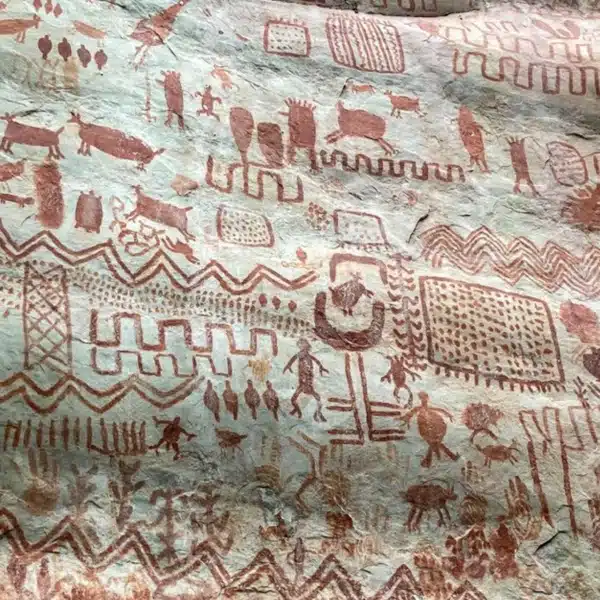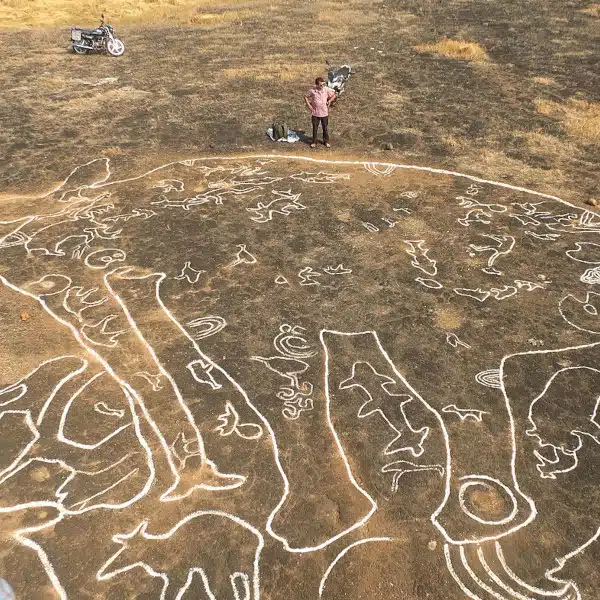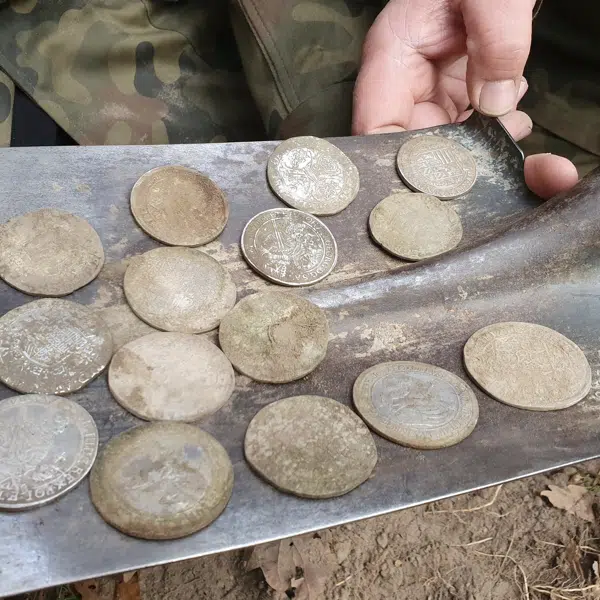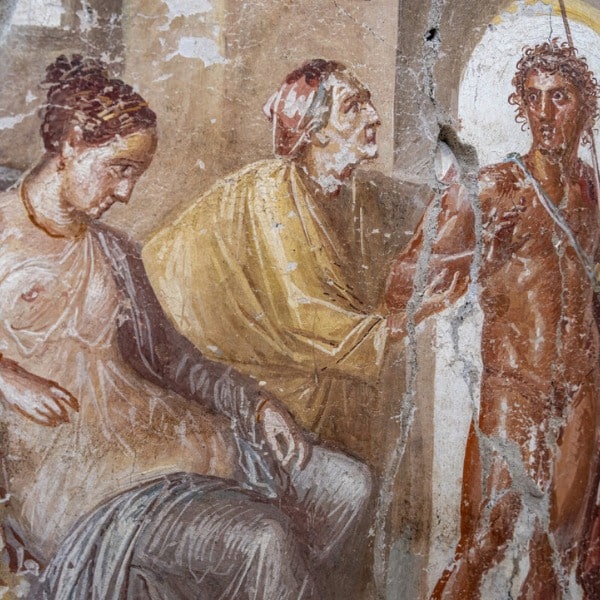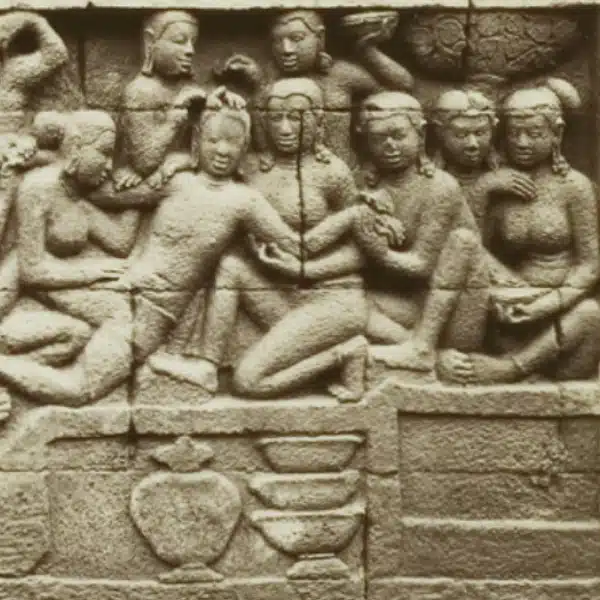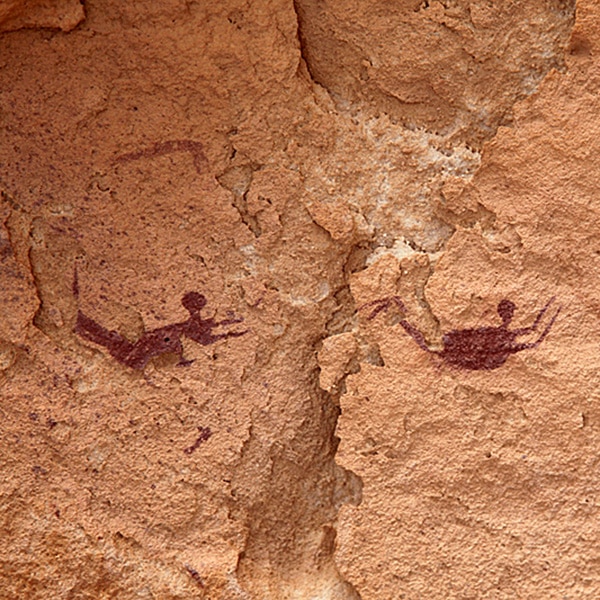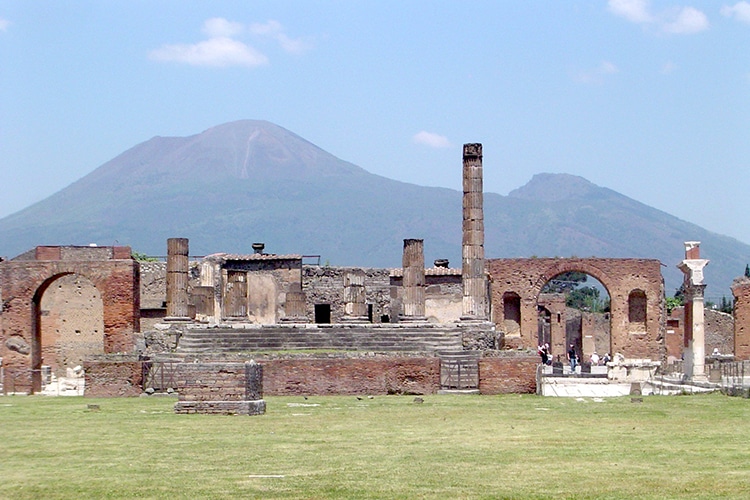
The ruins of Pompeii in front of Vesuvius. (Photo: Qfl247 via Wikimedia Commons, CC BY-SA 3.0)
On a normal day long ago in 79 CE, the volcano known as Mount Vesuvius erupted, covering the town below it in volcanic ash. Pompeii was obliterated with people suffocating under ash and buildings vanishing, not to be unearthed for hundreds of years. Historians today view Pompeii as a valuable time capsule of ancient life, preserved much as it was that fateful day. Among the ruins, researchers have discovered burnt papyri scrolls known as the Herculaneum Papyri. For the past 275 years, no one has been able to decipher the writings. A new contest known as the “Vesuvius Challenge” is offering up to $1 million to the people who can at last read the scrolls with AI technology.
The Herculaneum papyri were found in 1750 in a villa once belonging to Julius Caesar's father-in-law. The ancient library had been blackened and carbonized by the heat of the eruption. Since their discovery, many of the charred scrolls have been lost. The remaining 600 continue to present a puzzle for researchers. Just what is on the extremely delicate scrolls? New technology is enabling researchers to peer into them for the first time, and it has sparked hope that the mystery of their contents can at last be solved by computer scientists rather than archeologists.
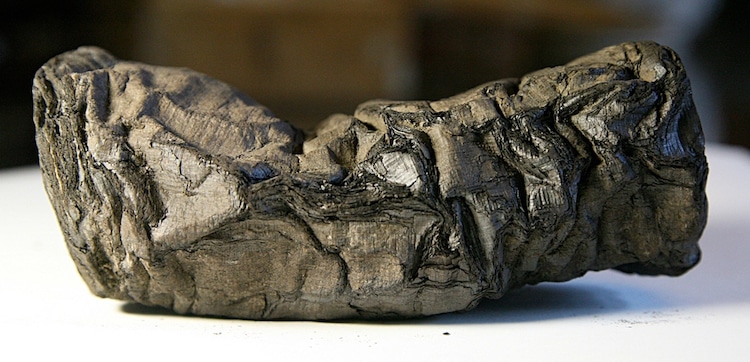
“Vesuvius Challenge” Scroll 1
This challenge was made possible by a 2015 discovery by Dr. Brent Seales of the University of Kentucky. He developed a technique called “virtual unwrapping,” which he tested on the En-Gedi scroll, found in the Dead Sea region. With X-ray tomography and computer vision, he “unrolled” the carbonized, furled scroll digitally. This itself is a complex digital and mathematical problem. The dense ink showed up as contrast in the x-ray image, allowing the text to be flattened and read. However, deciphering the text of the ink on the Herculaneum Papyri will be more difficult. The ink is made of carbon, meaning the x-ray cannot easily pick out the text from the carbonized paper.
The team under Dr. Seales has recently used a particle accelerator to scan two scrolls and several fragments of the Italian documents. The 4-8µm resolution with 16 bits of density data per voxel are ideal for machine learning to search for subtle surface patterns indicative of the ancient ink writing. Earlier this year, their machine learning model recognized ink in the high-resolution scans, even penetrating several layers of papyrus. The Vesuvius Challenge is meant to extend this AI-effort to finally reveal the secrets of the scrolls.
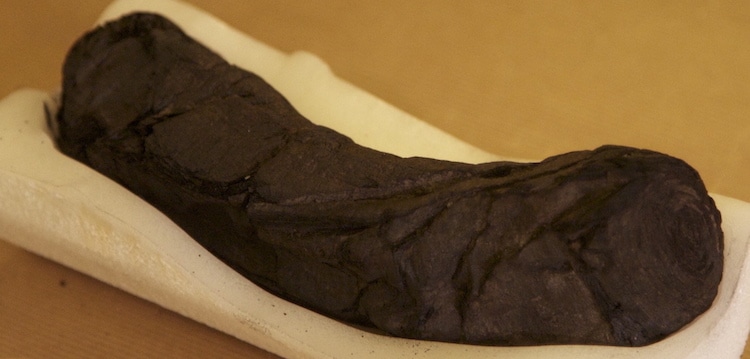
“Vesuvius Challenge” Scroll 2
The prize money is funded by entrepreneur Daniel Gross and former GitHub CEO Nat Friedman. The grand prize is $700,000 for the team that uses AI on the scans to “read at least four separate passages of continuous and plausible text from the scrolls, each at least 140 characters long” under certain conditions by December 31, 2023. A smaller prize of $100,000 awaits the team which detects ink, using the “ground truth data” from the Seales team's first find. Over $200,000 in prizes will also be announced at a later time. For those interested in trying their hand, the data is available online to begin work. While any winner will certainly be happy to claim their prize, the whole world will win if these long-lost texts can be read at last.
If you are an AI expert, try your hand at decoding x-ray scans of the carbonized Herculaneum Papyri to win fabulous prize money.
We're using a particle accelerator and AI to read a lost library from a dead empire.
People have been trying to read the Herculaneum Papyri for 275 years.
With your help, we'll do it in 2023.
Thrilled to announce the Vesuvius Challenge:https://t.co/KYVyona2fW pic.twitter.com/Fl8o0kp1O6
— Nat Friedman (@natfriedman) March 15, 2023

The Herculaneum papyri. (Photo: Sara Stabile et al. via Wikimedia Commons, CC BY 4.0)
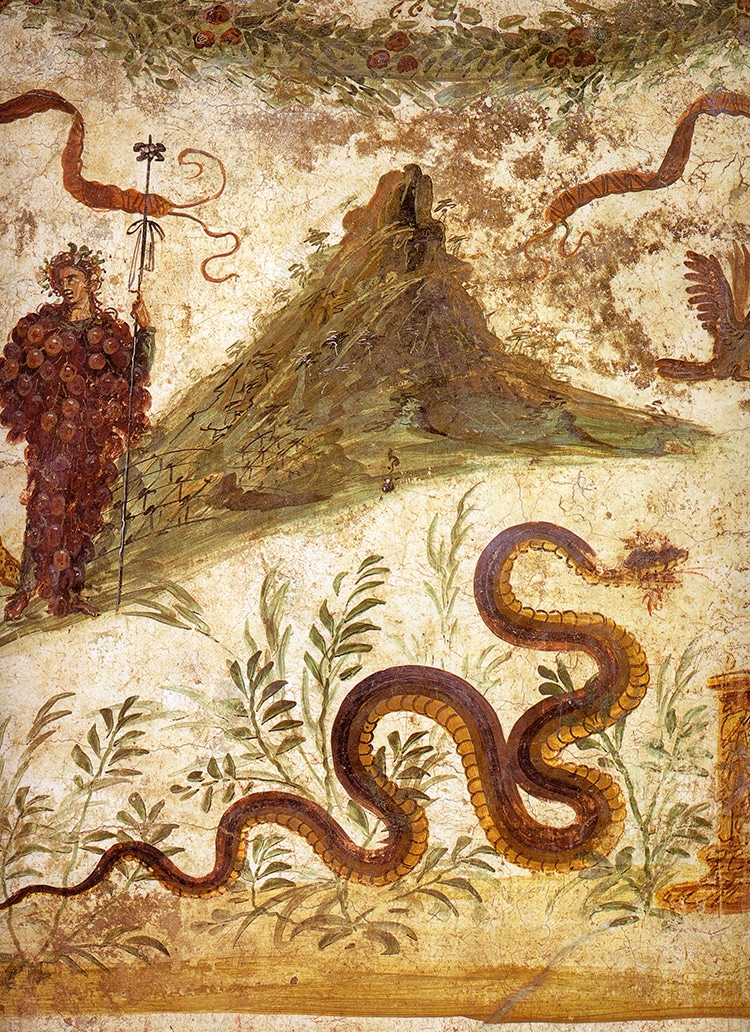
Fresco of Bacchus and Agathodaemon with Mount Vesuvius, painted in Pompeii's House of the Centenary. (Photo: WolfgangRieger via Wikimedia Commons, Public domain)
h/t: [DesignTAXI]
Related Articles:
Watch the Final Hours of the Once-Vibrant City of Pompeii
1,900-Year-Old Ceremonial Chariot Has Been Discovered Near Pompeii
Scientists Successfully Sequence the DNA of Man From the Pompeii Eruption for the First Time
Canadian Tourist Returns Stolen Artifacts to Pompeii to Break 15-Year “Curse”











































































